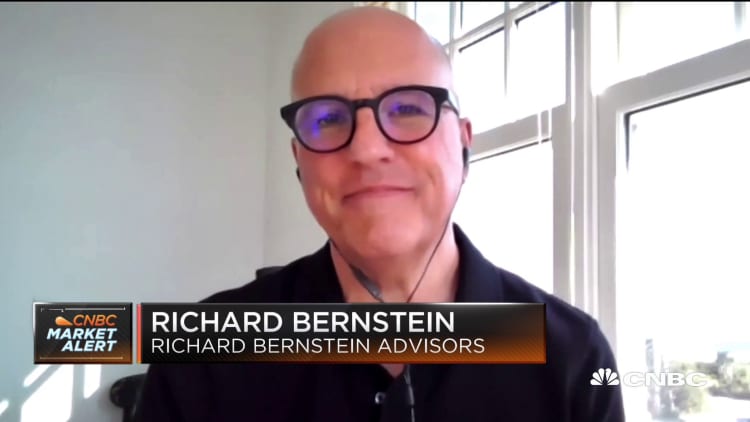
Stocks rose on Monday, the first trading day of August, as Wall Street tried to build on its four-month winning streak.
The Dow Jones Industrial Average closed 236.08 points higher, or 0.9%, at 26,664.40. The Nasdaq Composite jumped 1.5% to an all-time high, ending the day at 10,902.80. The S&P 500 gained 0.7% to 3,294.61, its highest closing level since Feb. 21. The S&P 500 is also within 3% of reaching an all-time high.
Shares of major tech companies led the way higher for the broader market. Microsoft gained more than 5% after confirming reports about being in talks to buy social video app TikTok in the U.S. The talks come even as President Donald Trump threatens to ban TikTok because of security concerns over its parent company's ties to China. Apple and Netflix rose 2.5% and 2%, respectively.
"We're seeing a rally in the tech sector really follow through from some of the earnings reports we saw last week," said James Ragan, director of wealth management research at D.A. Davidson. "The S&P 500 is a bit above our estimate of fair value, though. If we look out down the road, you could certainly see the market trade higher, but we need better visibility" on the economy and the coronavirus pandemic.
Some of the other factors driving the market higher included:
- Eli Lilly announcing the start of a phase 3 trial of LY-CoV555, an experimental coronavirus antibody treatment that may prevent the virus from spreading among U.S. nursing home staffers and residents. The stock gained 1.7%.
- Stocks got a boost from better-than-expected manufacturing data. The Institute for Supply Management's manufacturing PMI rose to 54.2 in July, topping a Dow Jones estimate of 53.8.
- Investors also cheered an earnings season in which companies are beating estimates at a record rate. Data compiled by FactSet showed that, through Friday, 84% of S&P 500 companies have beaten earnings expectations. If beat rate stays at that level, it will be the highest since FactSet started tracking the metric in 2008.
The major averages were coming off their fourth consecutive monthly gain in July, with the S&P 500 rising 5.5% and the Nasdaq jumping more than 6% in that time period. The Dow gained 2.4% last month.
To be sure, investor attention has also turned to Washington as Covid-19 stimulus negotiations continue.
"Increased unemployment claims and decreasing consumer confidence show some deterioration of the U.S. consumer backdrop," wrote Dennis DeBusschere, market strategist at Evercore ISI.
"If an agreement to extend unemployment support passes soon, the nascent Cyclical/risk-on rally from earlier in July can continue," he added. "Until then, risk-on factors will face headwinds despite the sharp decline in COVID net hospitalizations."
Republican and Democratic lawmakers remain at a standstill over some components of the next coronavirus relief legislation.
The key debate that separates the two parties is the federal boost to unemployment assistance, which was set at $600 per week in March but recently expired. While the White House has come out in favor of reducing the federal assistance to $200 a week, Democrats have called for keeping it at the $600 level.
Other provisions, such as another round of $1,200 stimulus checks, have broader support from both political parties.
Traders and economists alike are also eager for the July jobs report, which the Labor Department is scheduled to release on Friday.
The once-a-month jobs update will be of critical importance this month, especially since the number of people filing for unemployment benefits has been edging higher. According to Dow Jones, about 1.264 million new jobs are expected, well below the 4.8 million added in June, and the unemployment rate is expected to fall to 10.6% from 11.1%.
Still, market moves around the release could be mixed given the disparity in forecasts. Some economists expect more than 2 million jobs were added, and some even see flat or negative payrolls.
Subscribe to CNBC PRO for exclusive insights and analysis, and live business day programming from around the world.



